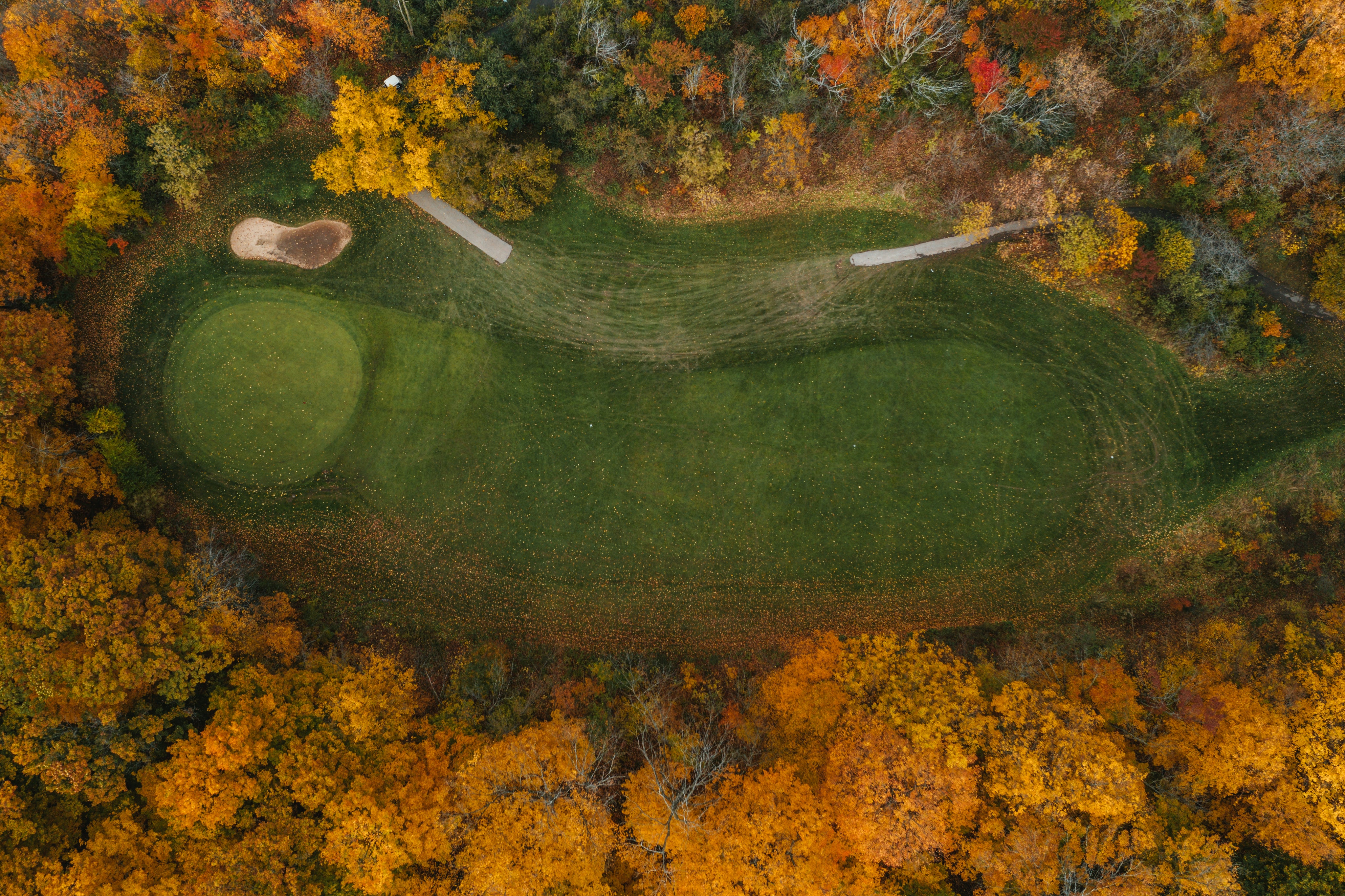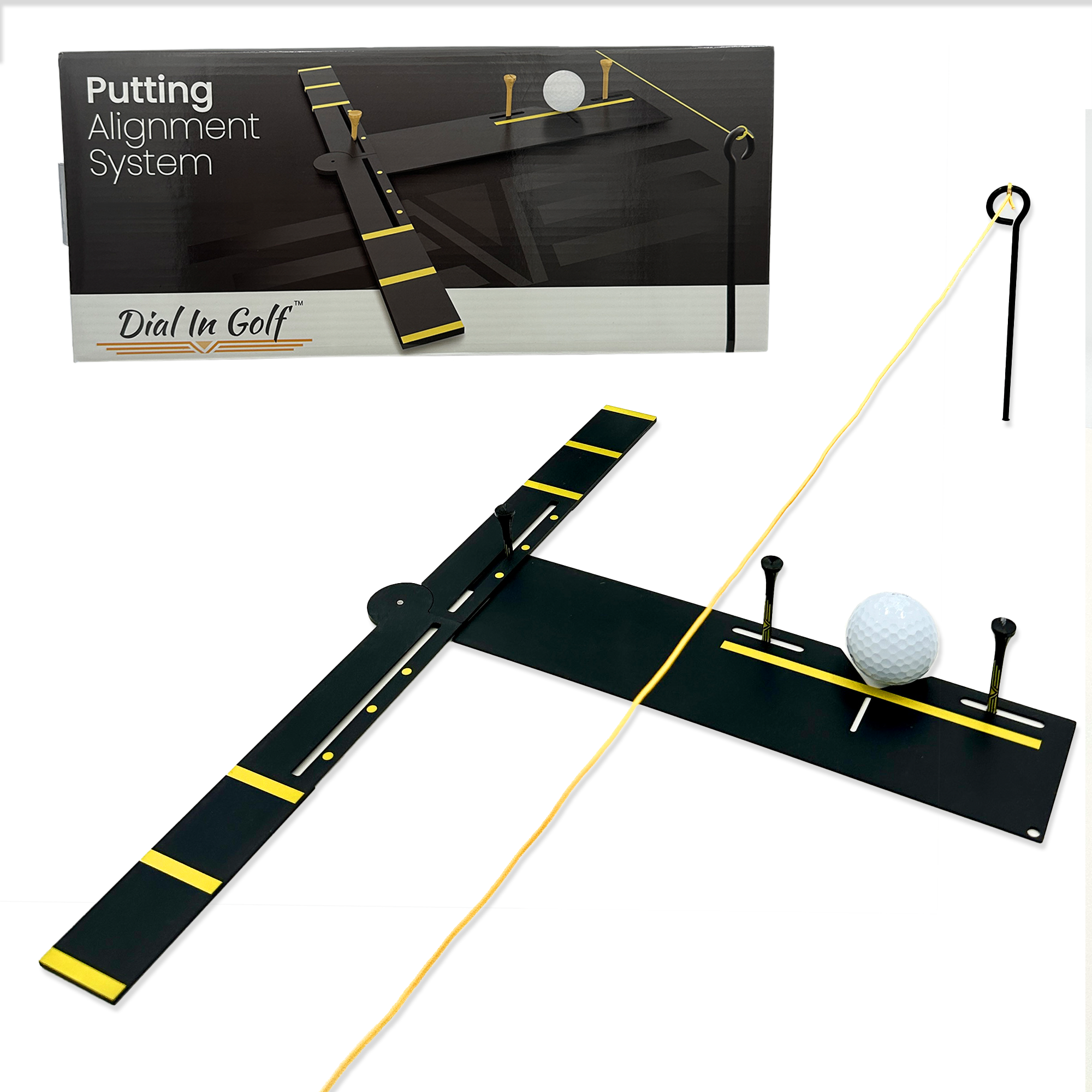
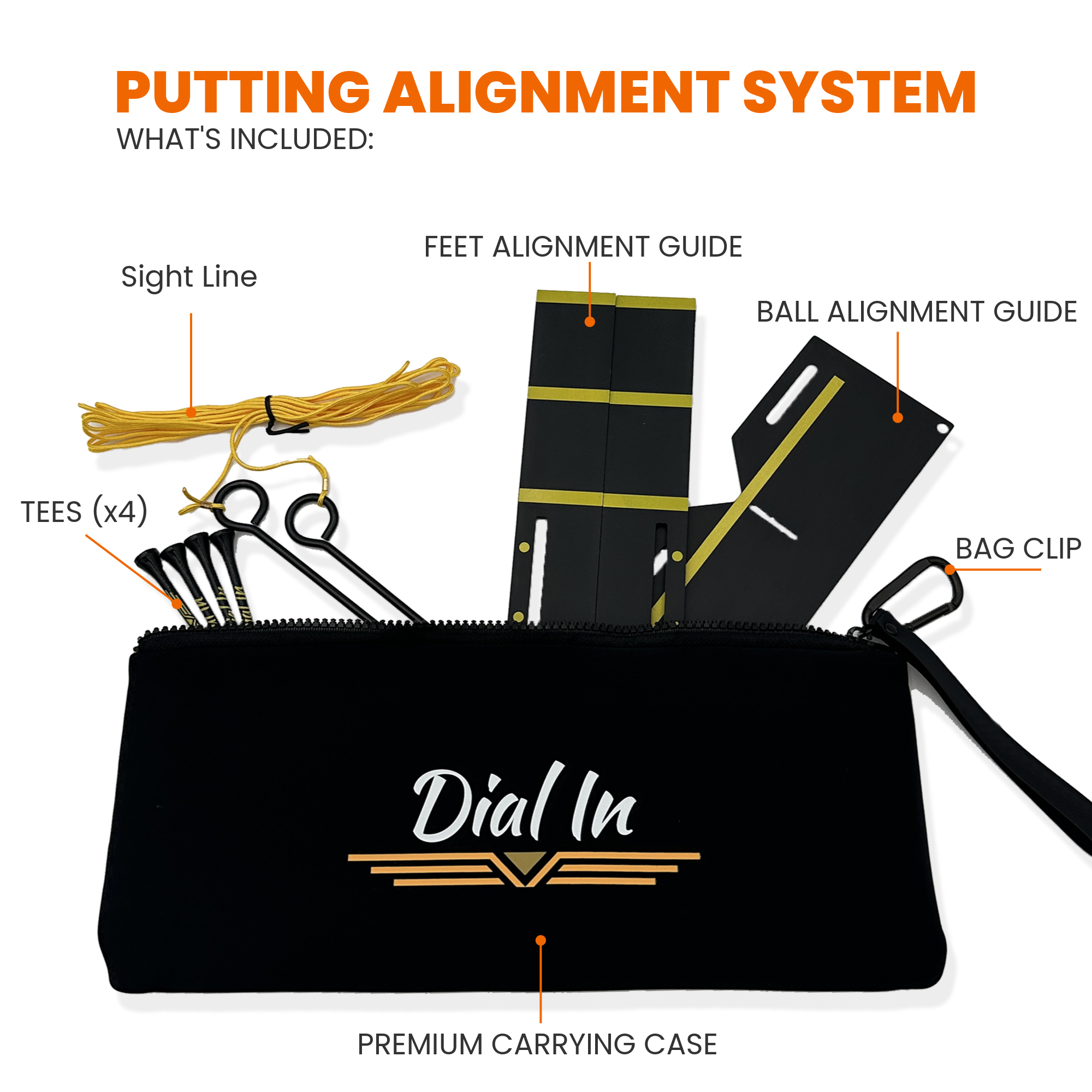
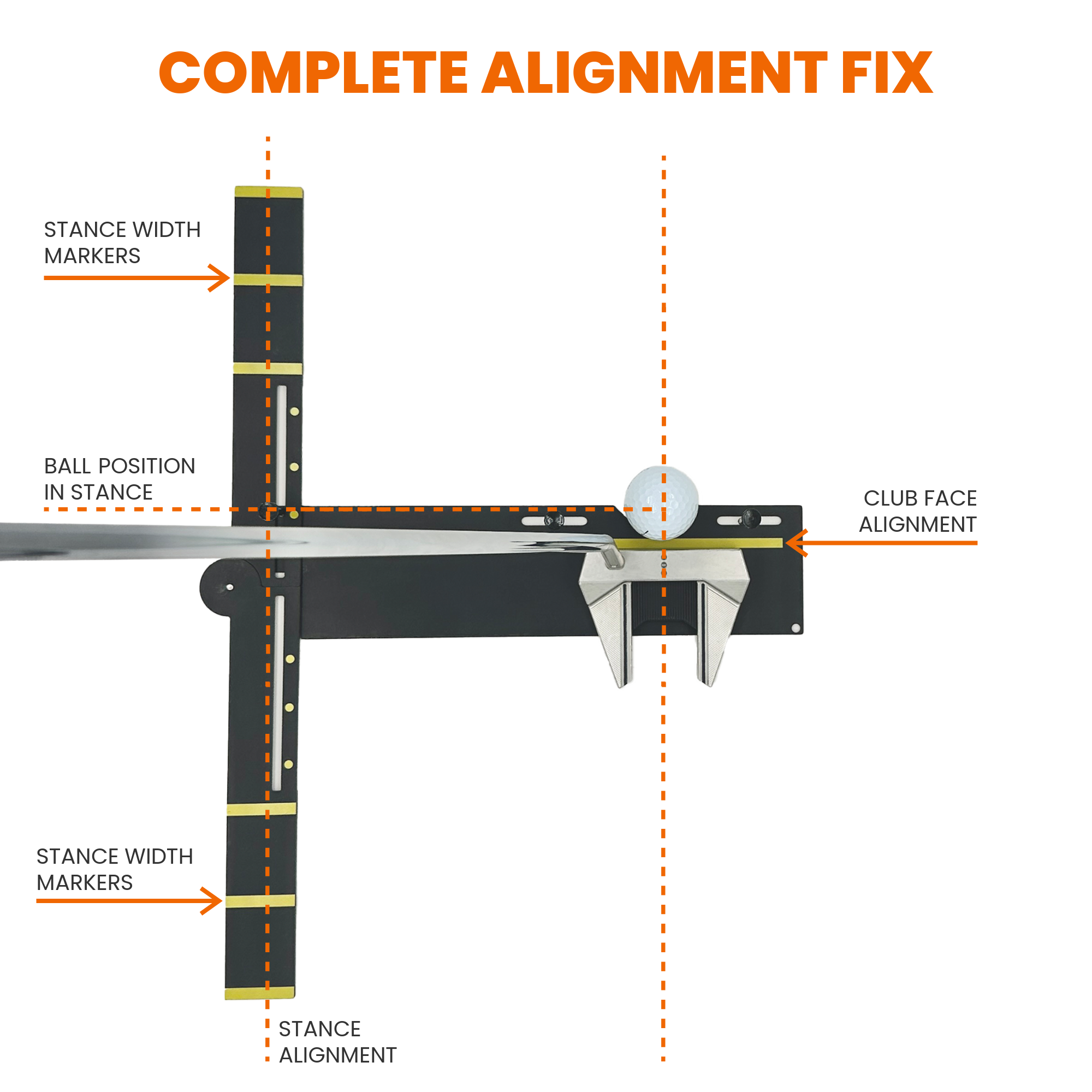
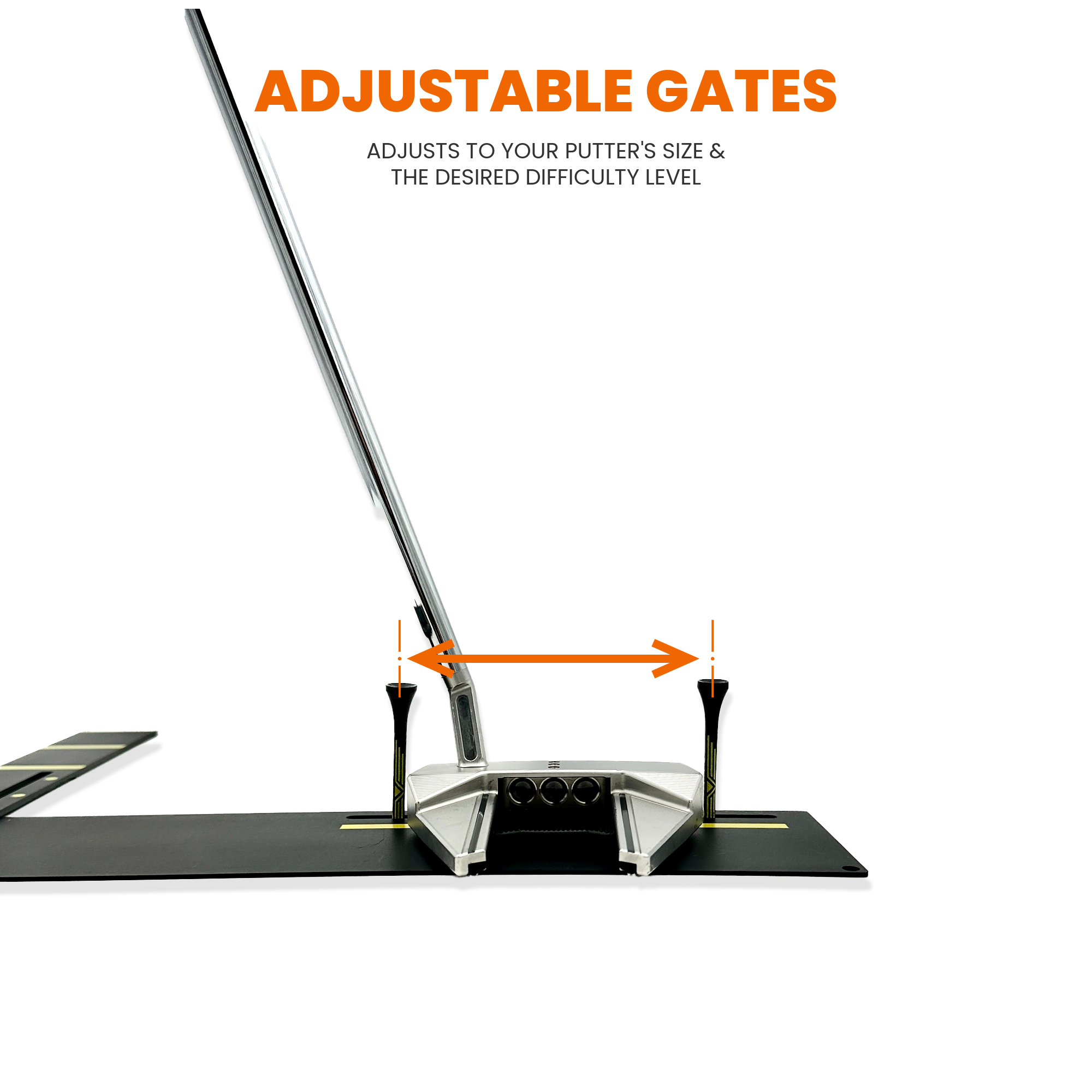
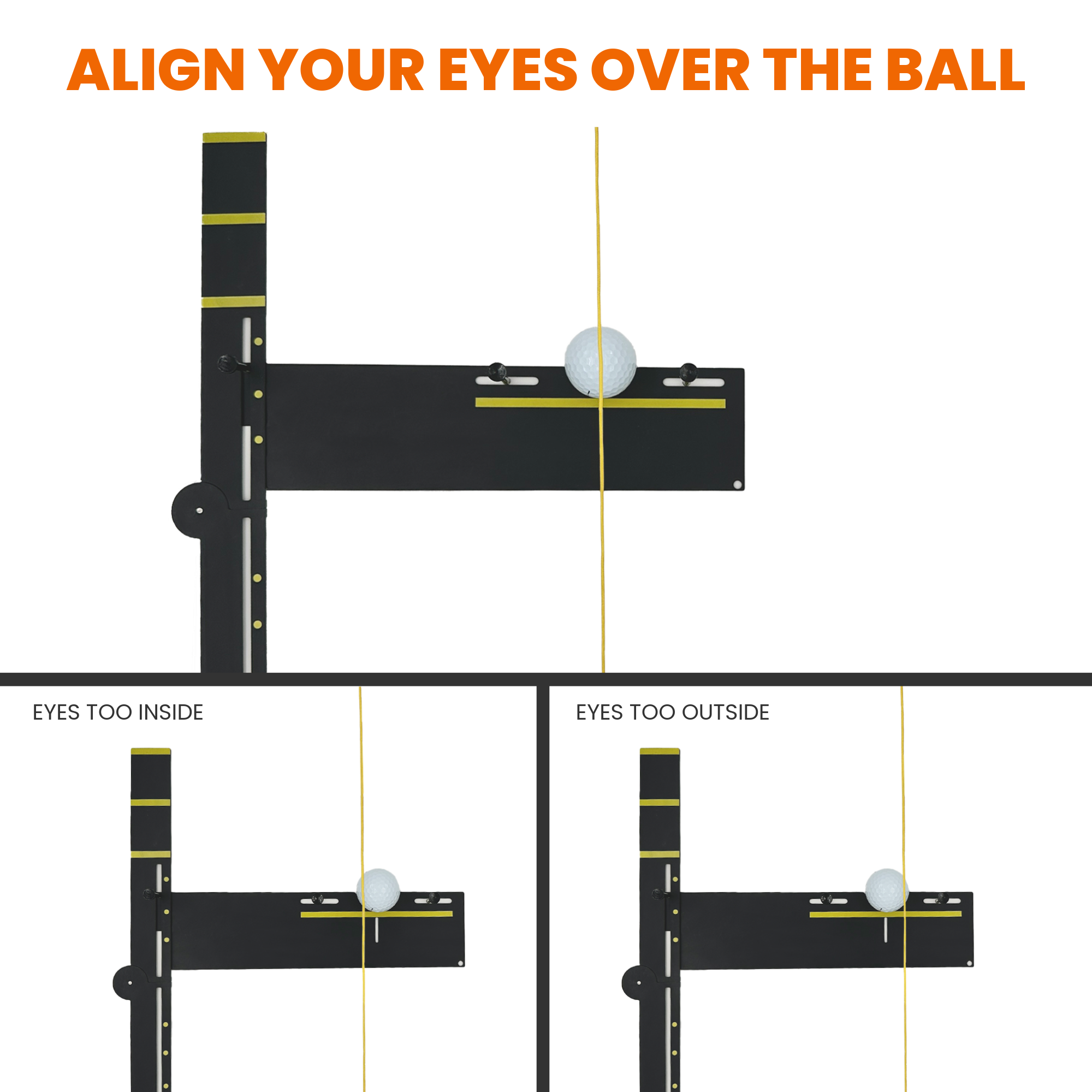
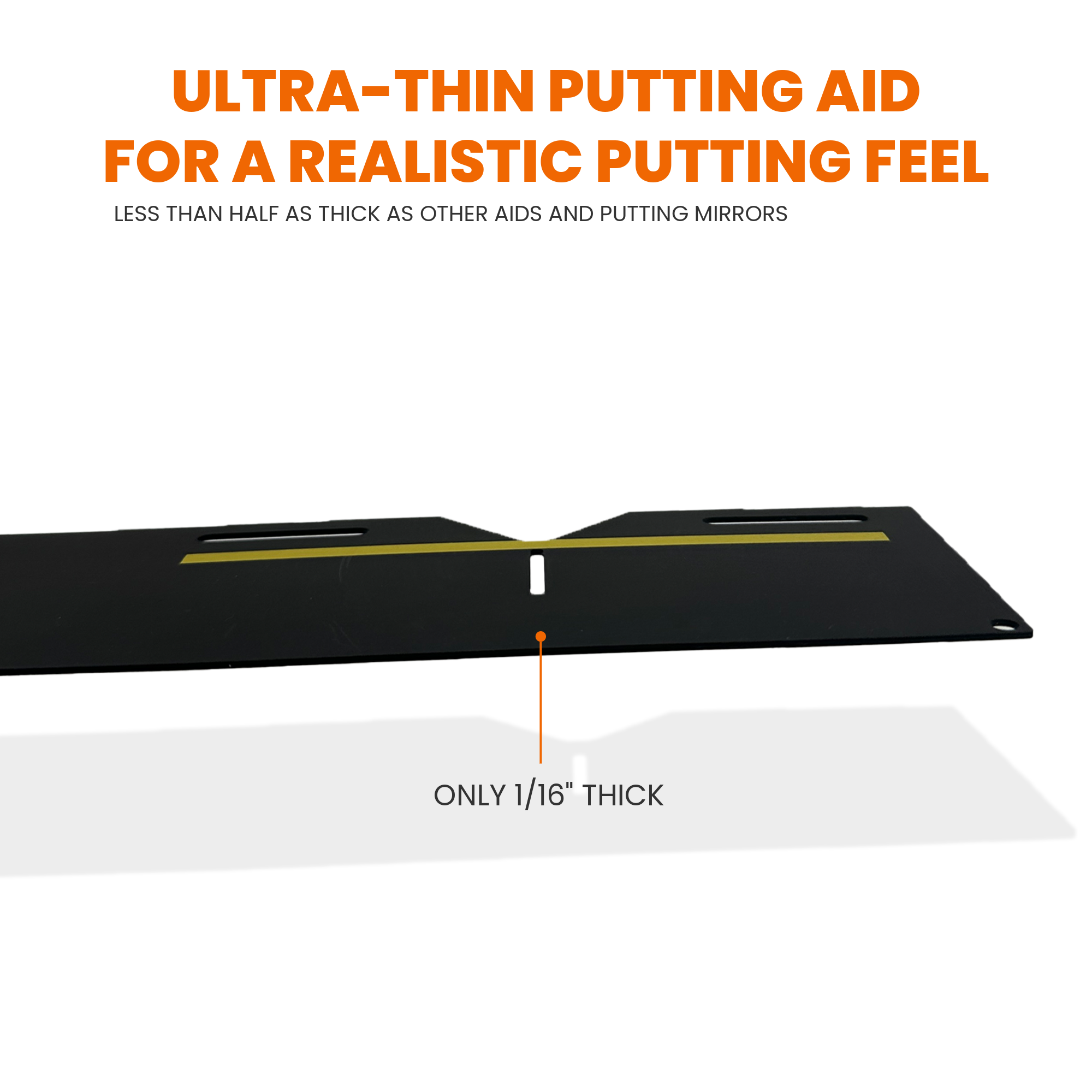
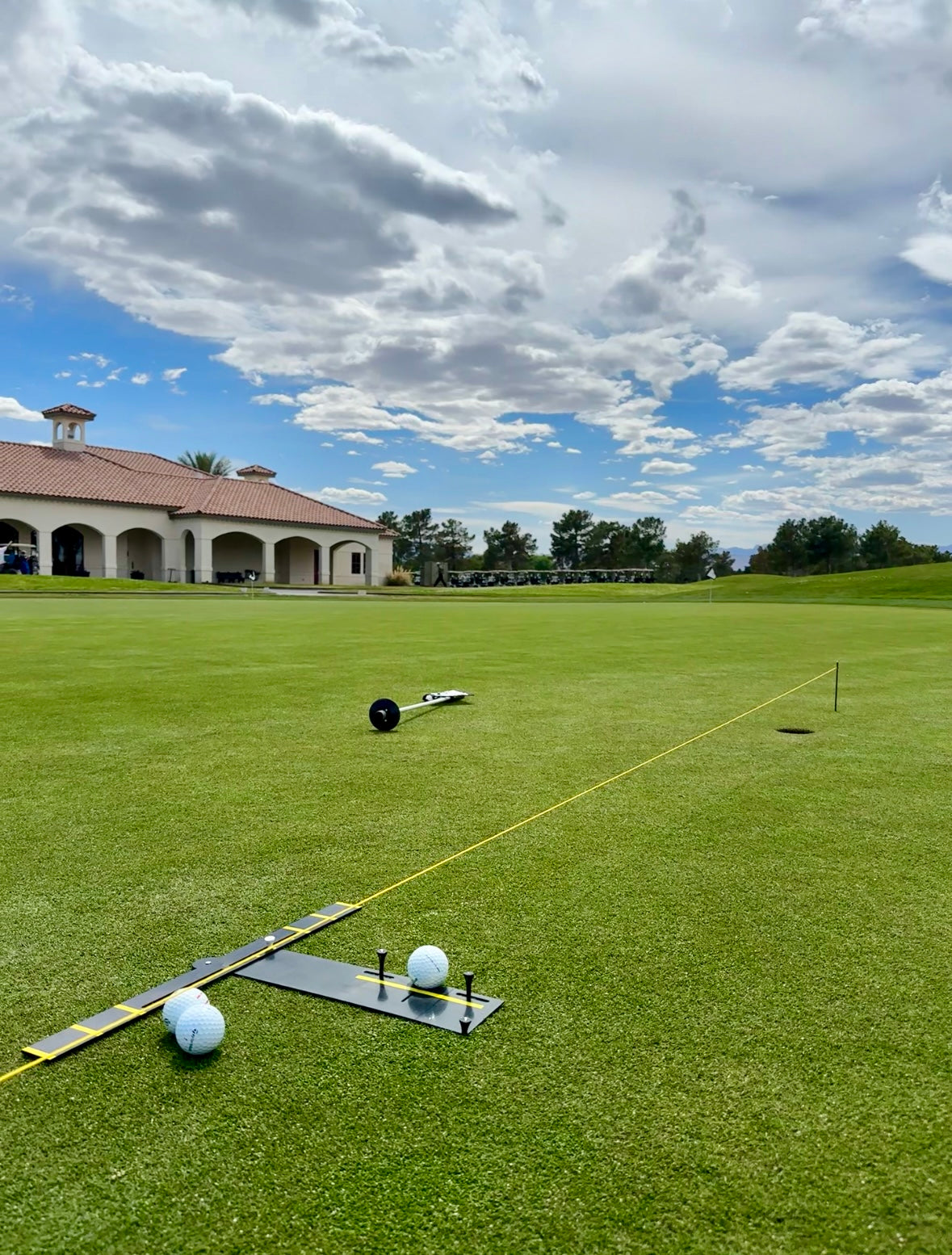
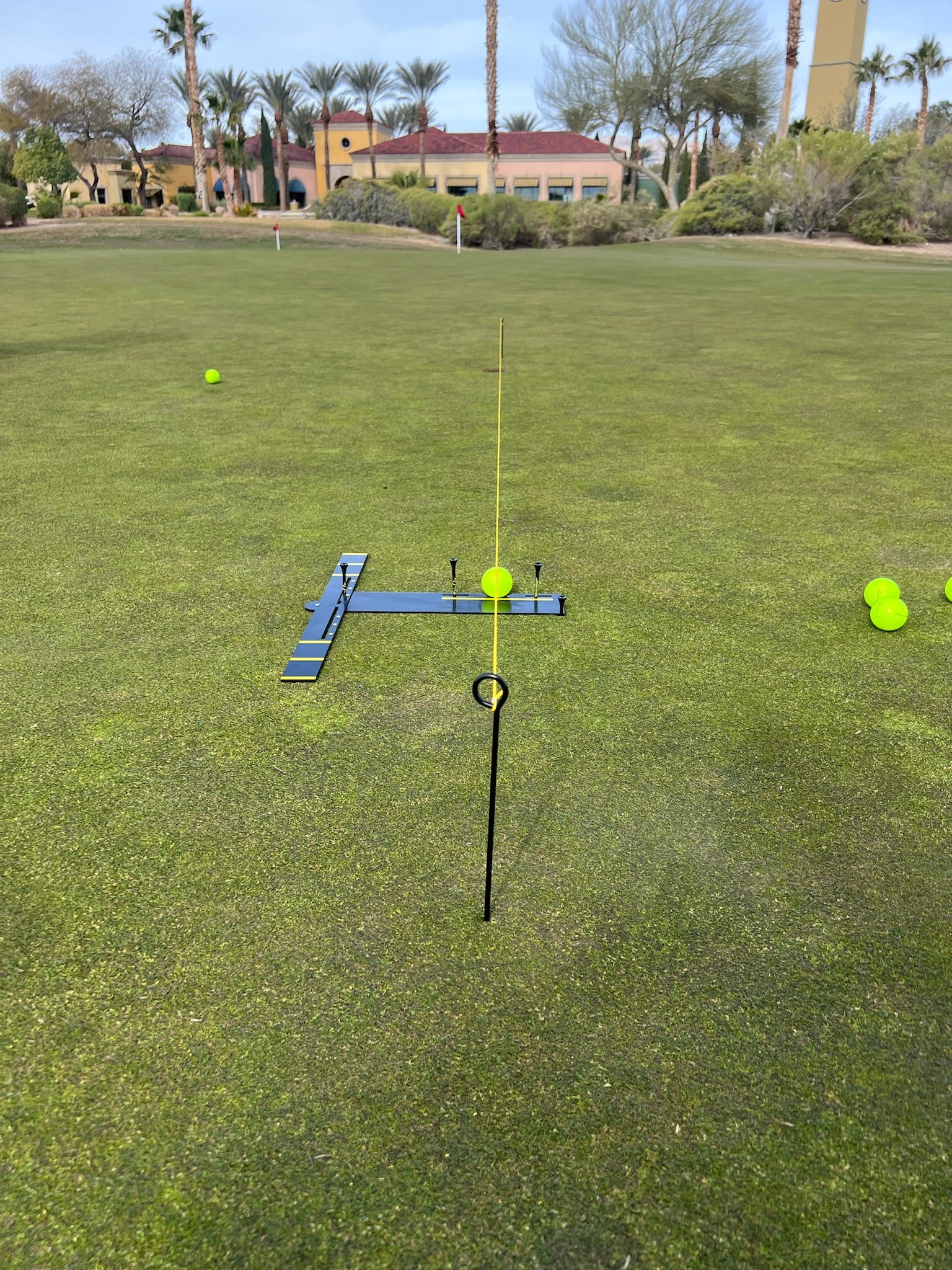
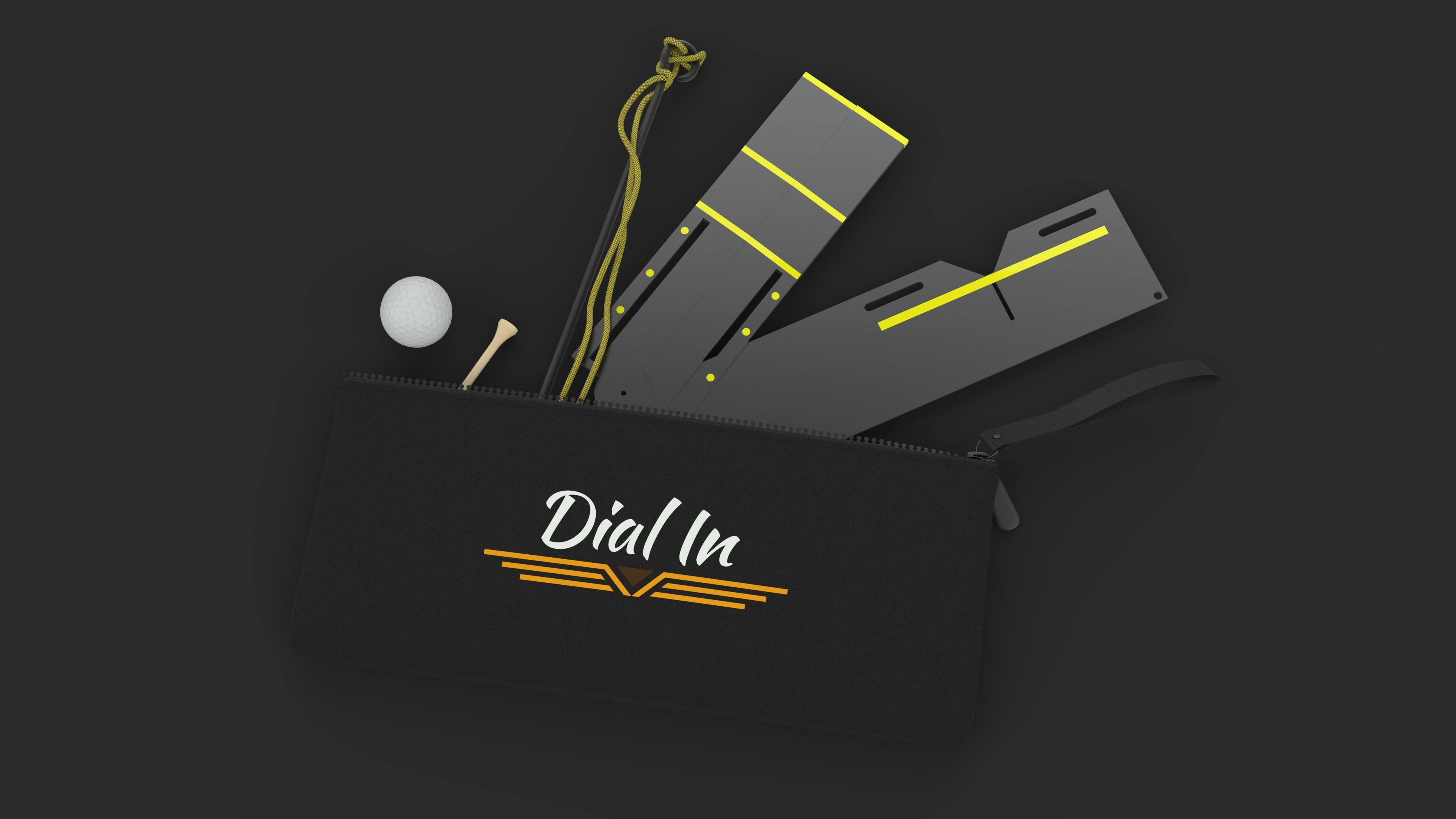
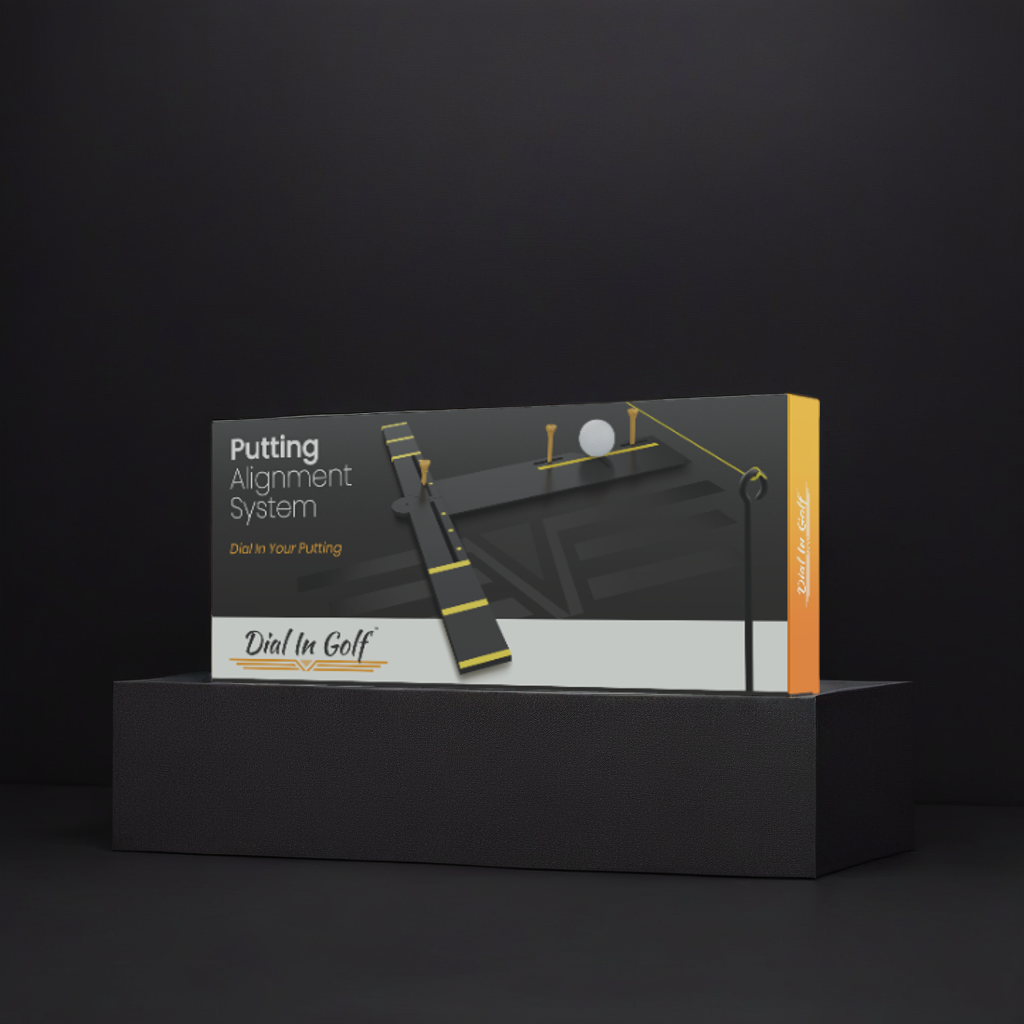
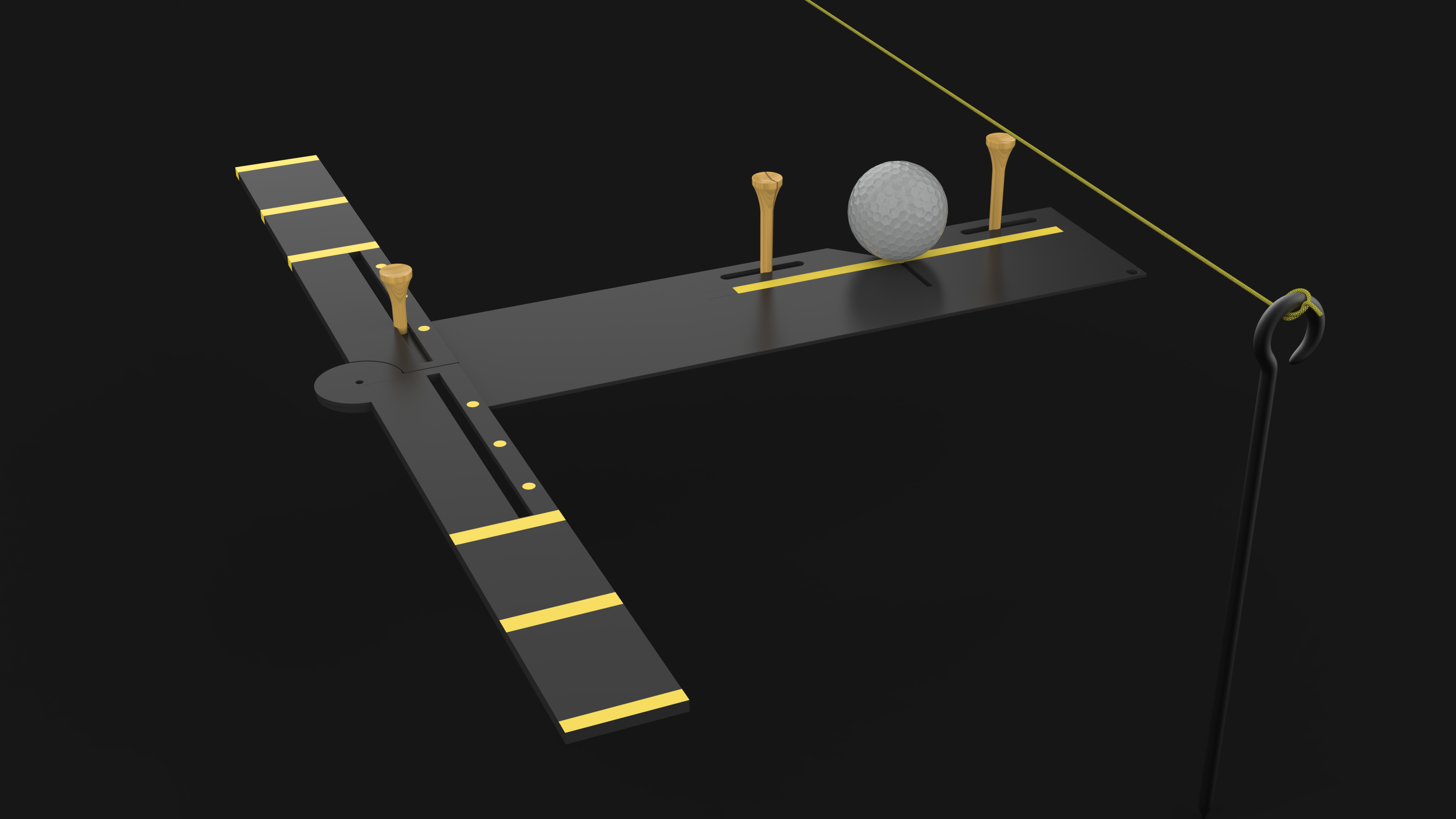
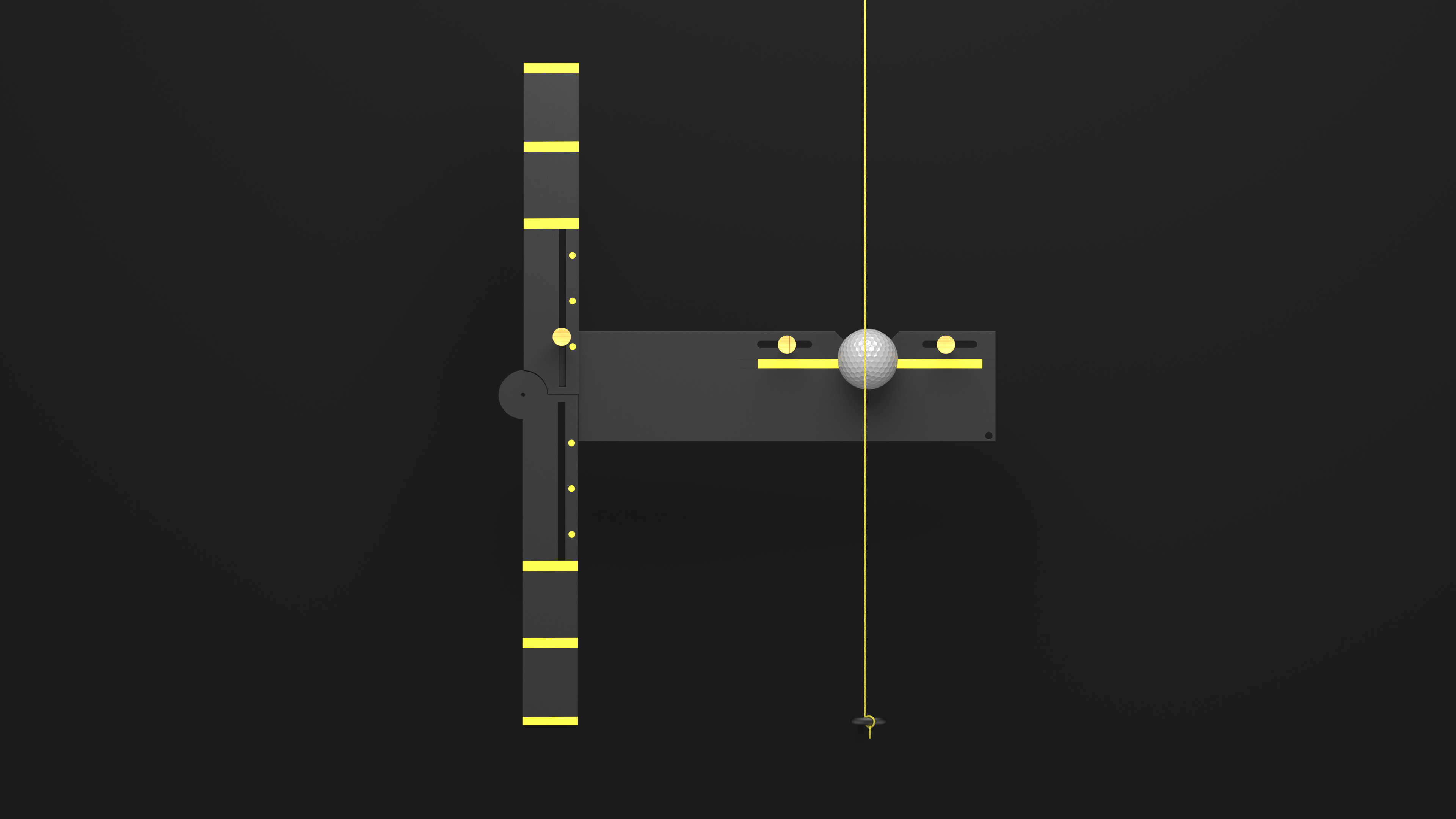
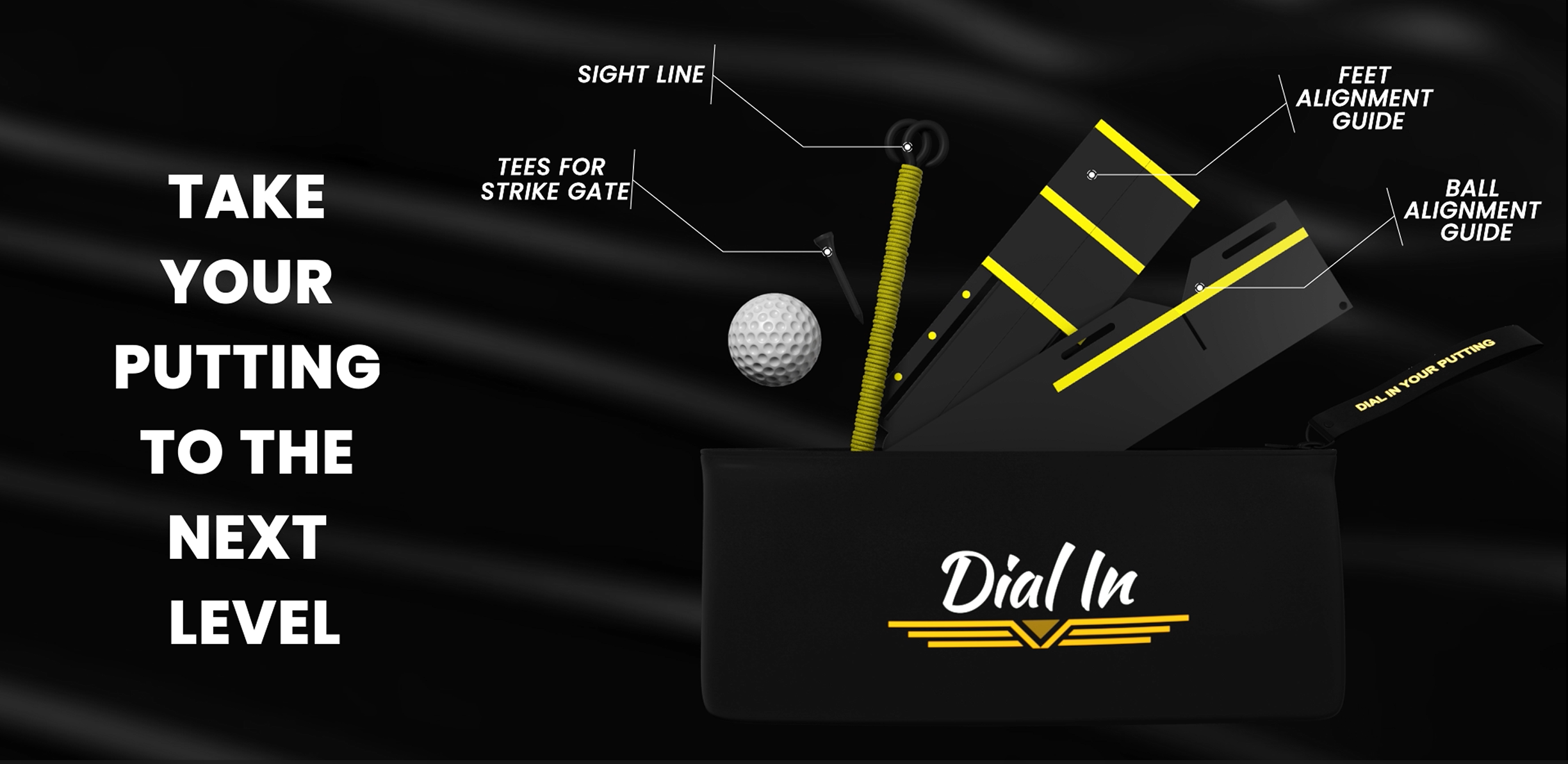
Dial In™ Putting Alignment System
Description
The Dial In Putting Alignment System helps golfers build confidence and accuracy on the green. It targets key fundamentals like putter face alignment, stance setup, eye positioning, and target line control.
Golfers use this compact tool as a pre-round routine or daily practice. The lightweight design fits easily into any bag and sets up in seconds. Whether you're a beginner or experienced player, this golf putting aid supports consistent performance. It is trusted for its precision and simplicity. Improve your stroke with a putting trainer that builds confidence and consistency without requiring hours of practice.
Quick & Easy Setup
Be ready to roll in seconds. The Dial In Putting Alignment System assembles effortlessly, allowing you to find time to Dial In before any round.
Enhanced Sight Line Visibility
See the path. Sink more putts. Our bold, high-contrast sight line helps you visualize your target and ensure the ball starts on line.
Travel-Ready Design
Lightweight. Compact. Durable. Whether you're headed to the course or across the country, the Dial In Putting Alignment system fits easily in your bag and goes wherever your game takes you. It's premium neoprene carrying case comes with a carabiner to easily clip onto your bag and be ready at all times.
Trusted by Golfers of All Levels
From scratch players to weekend warriors, golfers everywhere rely on Dial In to build confidence, consistency, and lower scores.
Features
- High-contrast 10 foot sight line
- Durable ABS design folds down into convenient and light carrying case
- Adjustable Putting Gate
- Alignment Markings for all aspects of putting setup
- Universal design for golfers of all sizes of golfers whether right or left handed.
What's Included
- High-contrast 10 foot sight line
- Feet Alignment Guide
- Ball Alignment Guide
- 4 Dial In Golf Tees
- Instructions For Use / Warm Up Guide
- Premium Neoprene Carrying Case
Dial in your putting and experience a new confidence on the greens with our Putting Alignment System today!

6
ALIGNMENT FUNDAMENTALS IN ONE PRODUCT
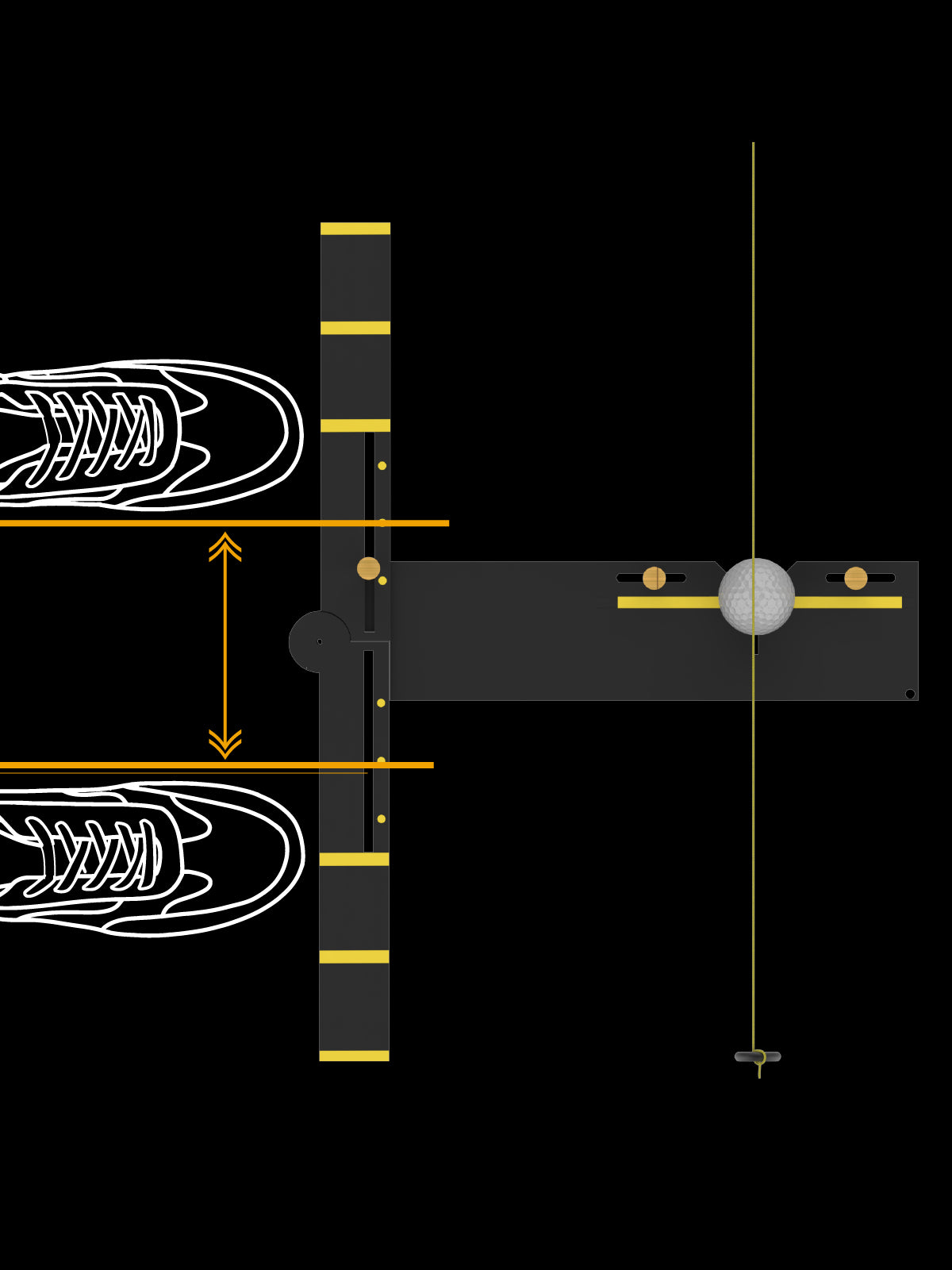
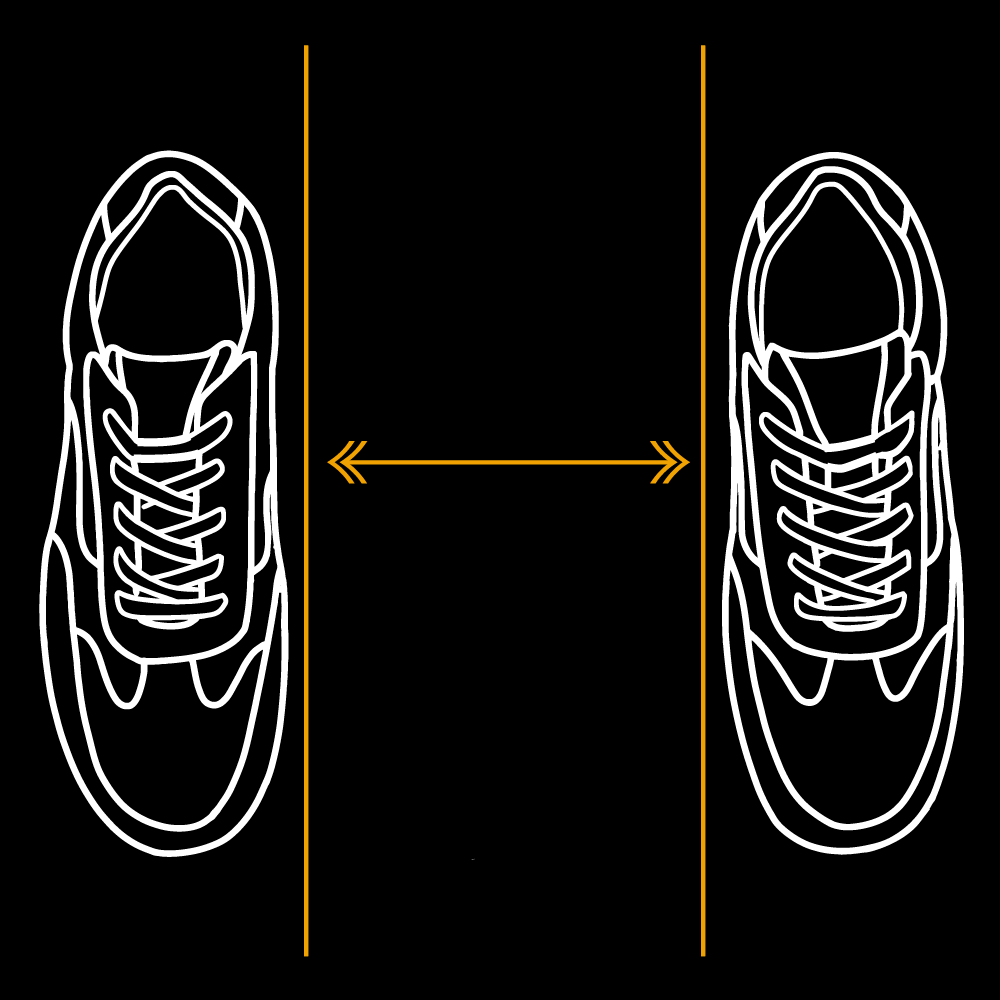
Stance Width
The distance between your feet while putting is crucial for balance, stability, and stroke consistency. A wider stance provides more stability and promotes a straight-back, straight-through stroke, while a narrower stance allows for more mobility and an arcing stroke. Finding the right stance width helps maintain proper posture, control stroke path, and adapt to different green speeds, ultimately improving putting accuracy.
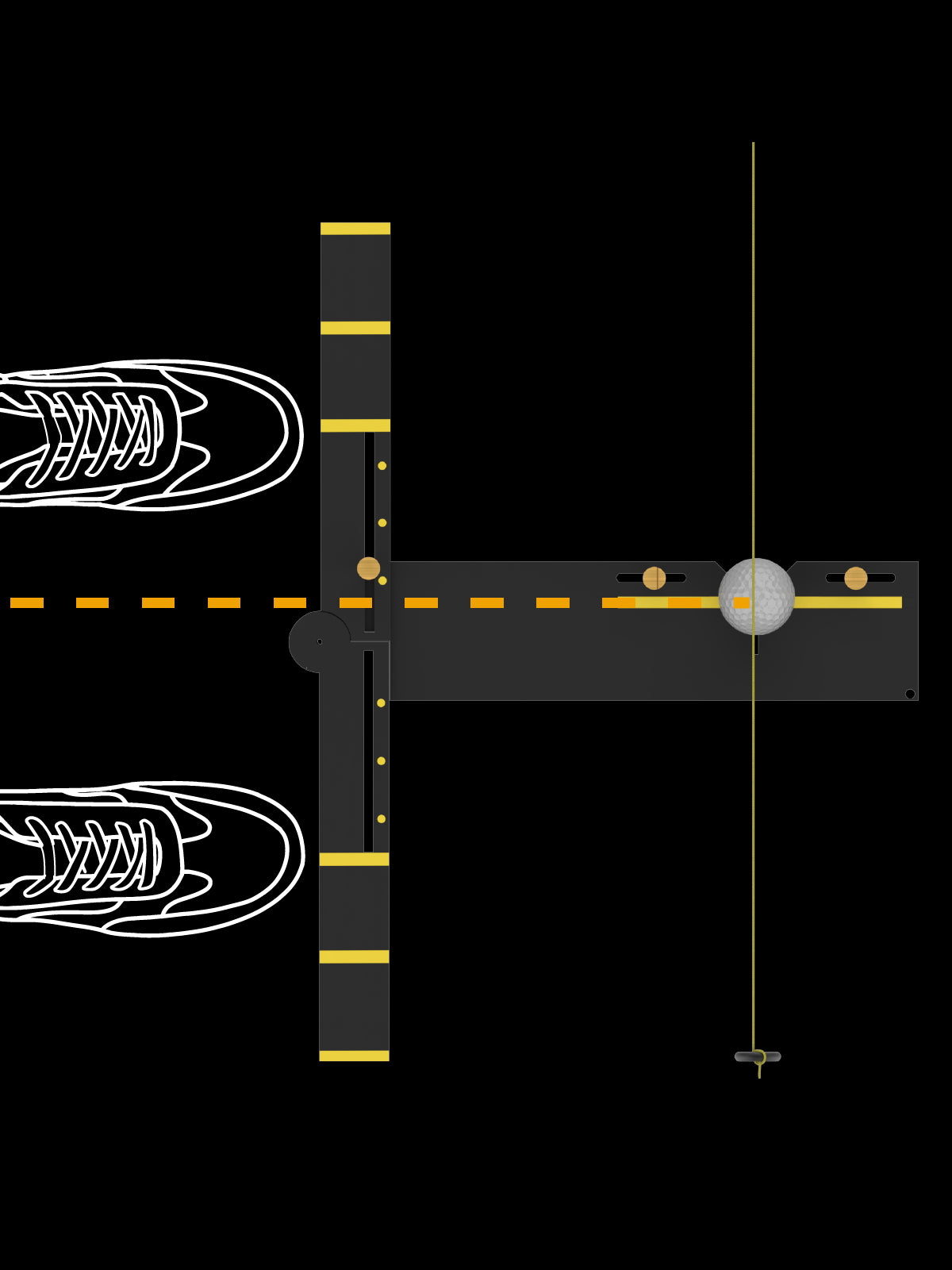
Ball Position
The position of the ball in your stance affects stroke path, loft, and consistency in putting. Placing the ball too far back can cause a downward strike, leading to inconsistent roll, while positioning it too far forward may result in a glancing stroke and misalignment. An optimal ball position, typically just forward of center, promotes a smooth, consistent stroke with proper loft and true roll.
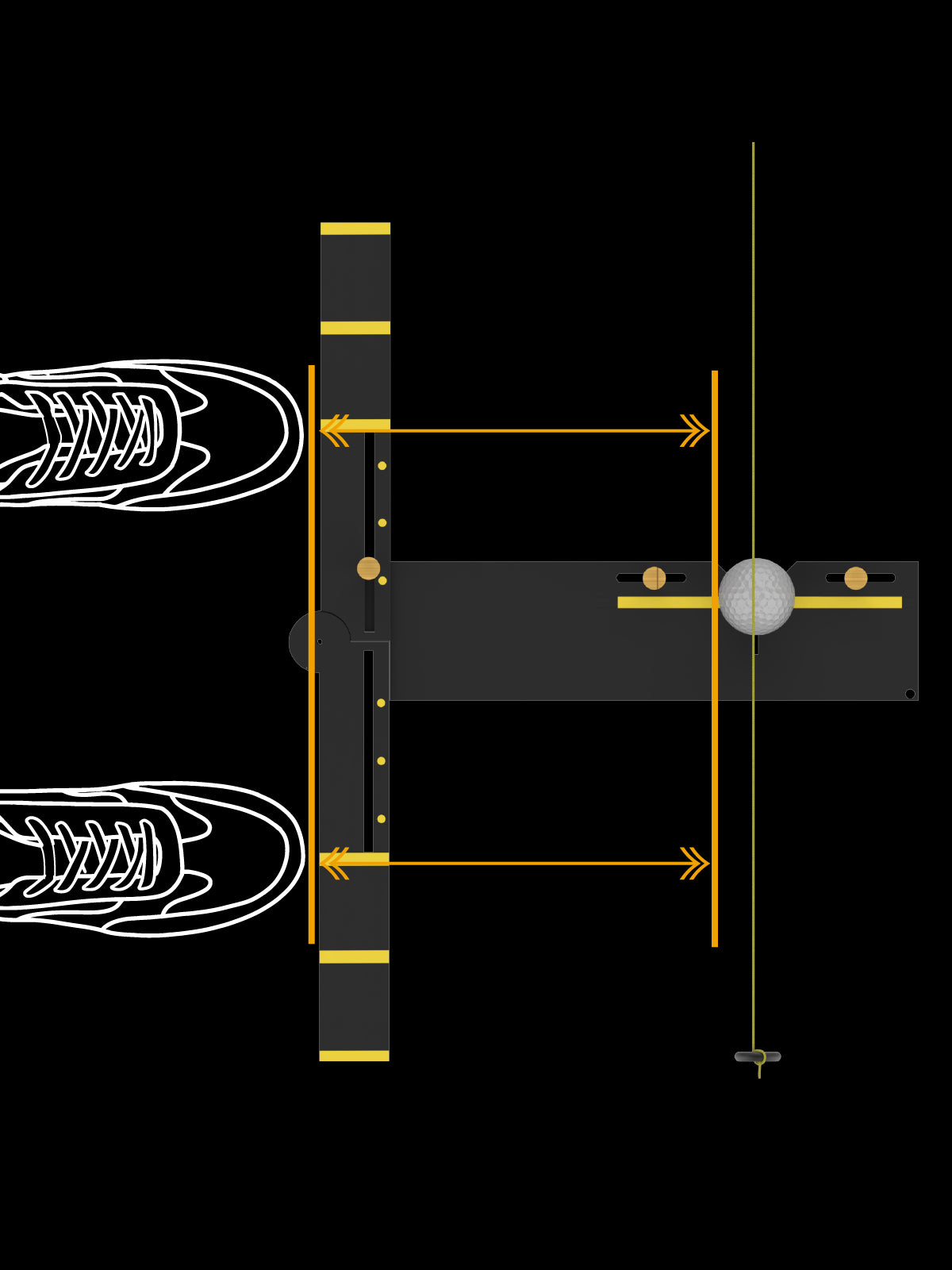
Distance From Ball
The distance you stand from the ball while putting affects posture, alignment, and stroke consistency. Standing too close can cause an inside-to-out stroke and restrict movement, while standing too far can lead to excessive arc and poor contact. An optimal distance, where your eyes are directly over or slightly inside the ball, promotes better alignment, a natural stroke path, and improved accuracy.
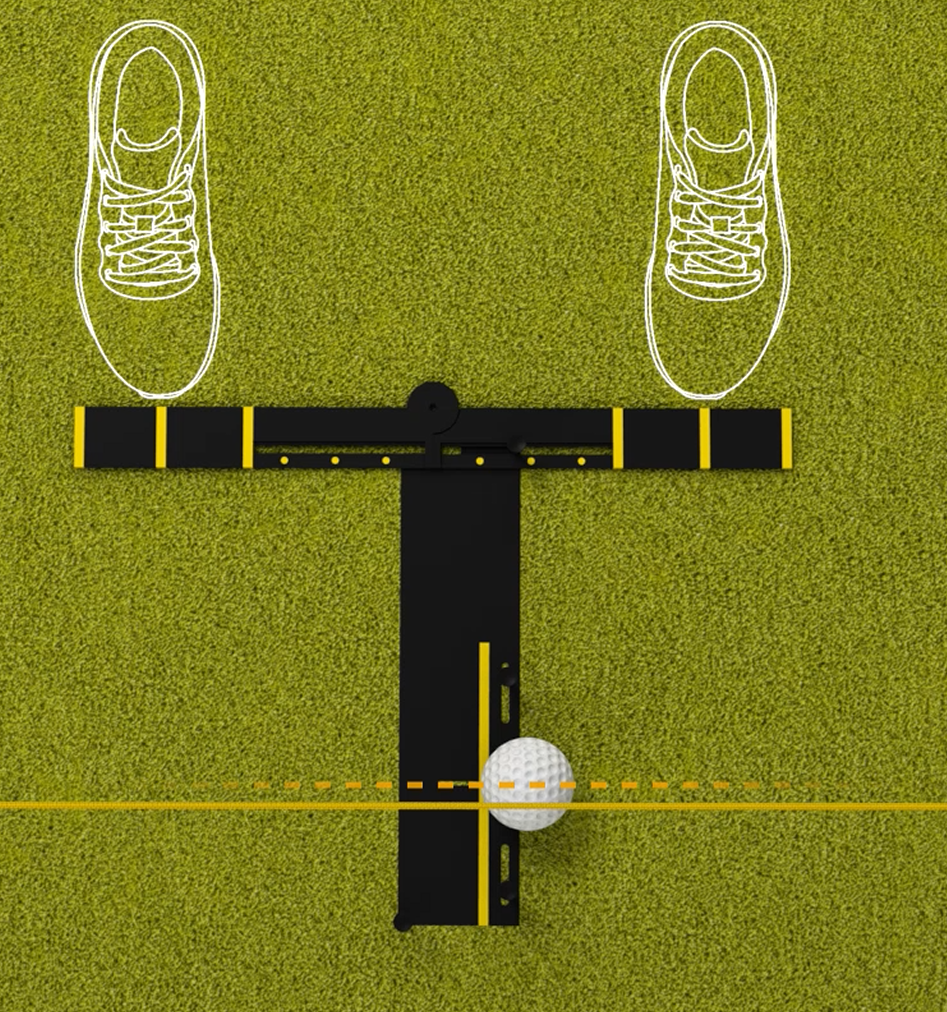
Eye Alignment
Positioning your eyes directly over or slightly inside of the ball is essential for accurate alignment. It provides a clear view of the target line, reducing errors in aim and helps create a natural, consistent stroke path, improving the chances of sinking your putt.
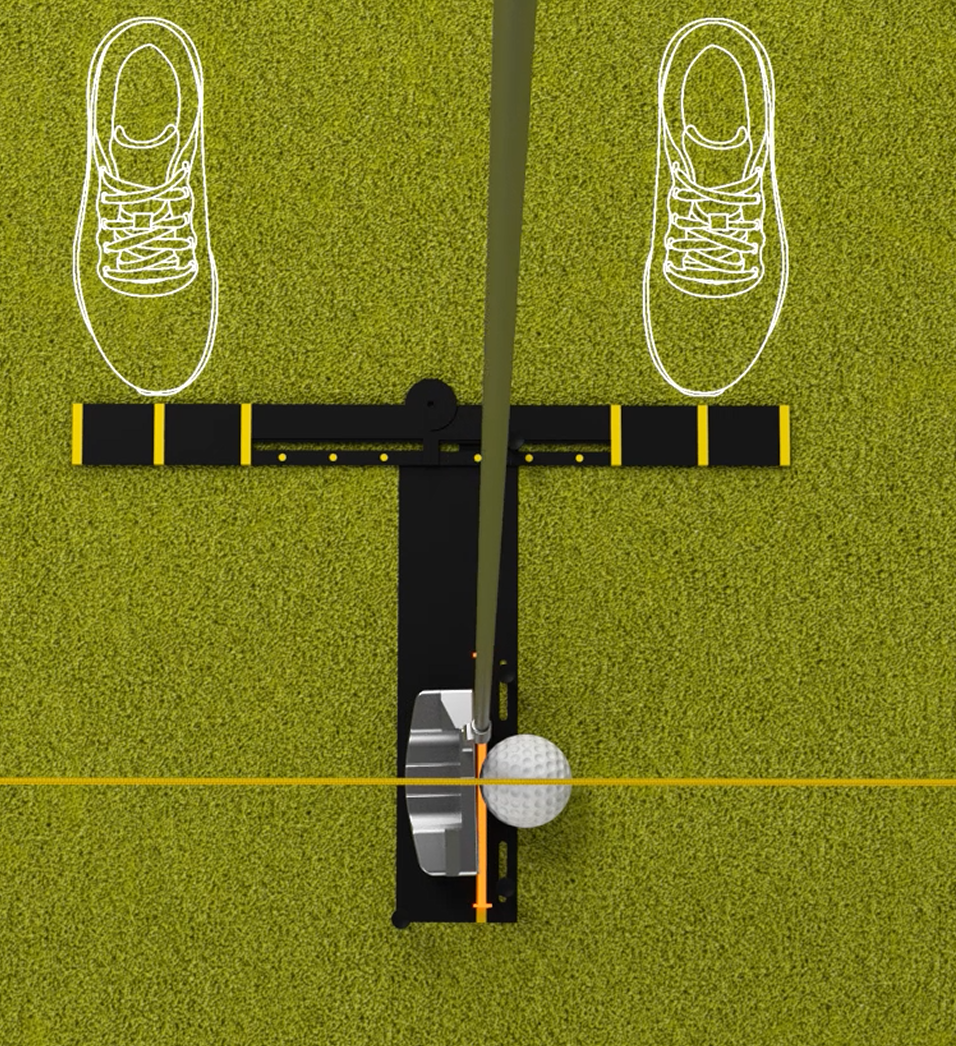
Face Alignment
Maintaining a square club face alignment at impact is vital in putting. It ensures the ball starts on the intended target line, minimizing the chance of unintended starting line and spin.
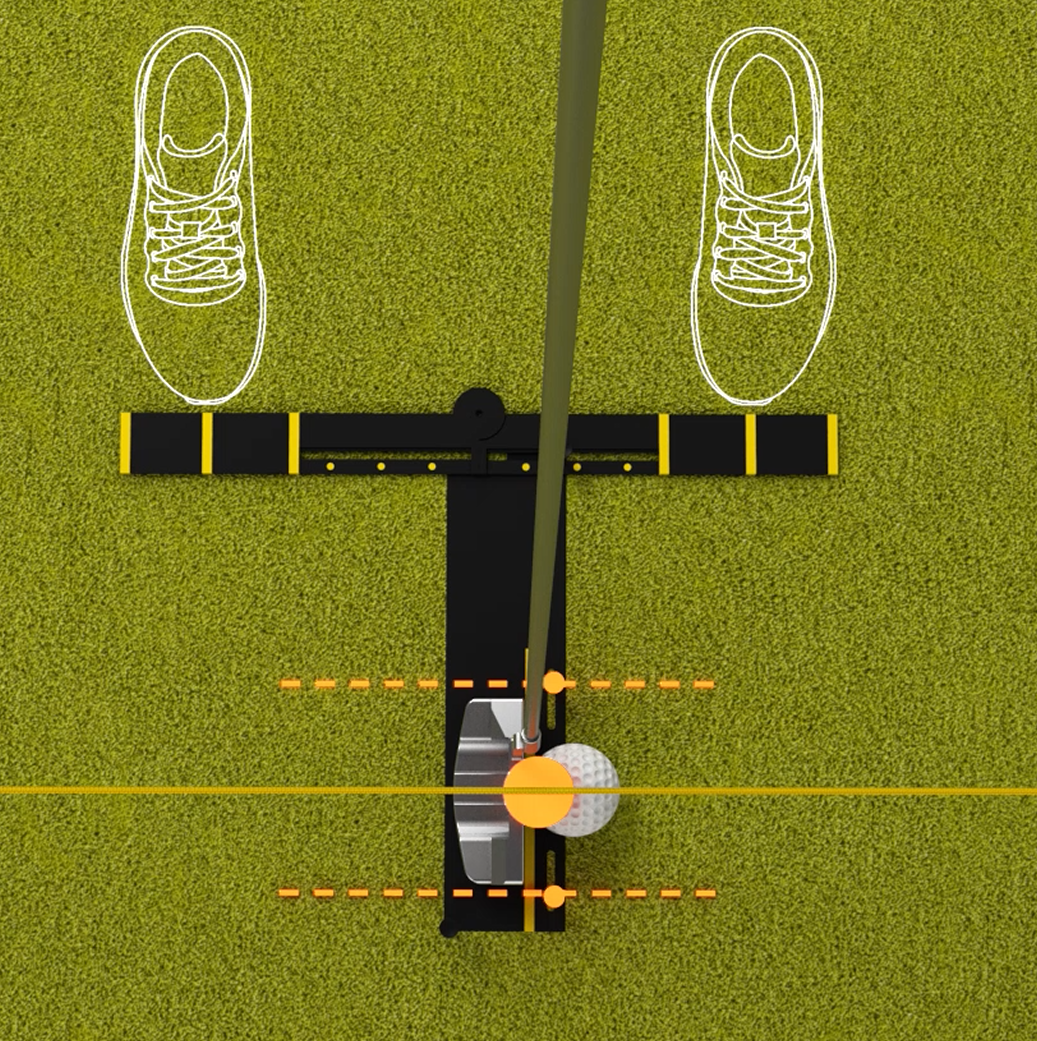
Center Strike
The putting gate and alignment indicators ensure you hit the ball in the center of the club face. This is crucial to ensure a clean, stable roll, helping the ball stay on its intended line without veering off course. Striking the center also maximizes energy transfer, allowing for consistent distance control.

Stance Width
The distance between your feet while putting is crucial for balance, stability, and stroke consistency. A wider stance provides more stability and promotes a straight-back, straight-through stroke, while a narrower stance allows for more mobility and an arcing stroke. Finding the right stance width helps maintain proper posture, control stroke path, and adapt to different green speeds, ultimately improving putting accuracy.
Ball Position
The position of the ball in your stance affects stroke path, loft, and consistency in putting. Placing the ball too far back can cause a downward strike, leading to inconsistent roll, while positioning it too far forward may result in a glancing stroke and misalignment. An optimal ball position, typically just forward of center, promotes a smooth, consistent stroke with proper loft and true roll.
Distance From Ball
The distance you stand from the ball while putting affects posture, alignment, and stroke consistency. Standing too close can cause an inside-to-out stroke and restrict movement, while standing too far can lead to excessive arc and poor contact. An optimal distance, where your eyes are directly over or slightly inside the ball, promotes better alignment, a natural stroke path, and improved accuracy.
Eye Alignment
Positioning your eyes directly over or slightly inside of the ball is essential for accurate alignment. It provides a clear view of the target line, reducing errors in aim and helps create a natural, consistent stroke path, improving the chances of sinking your putt.
Face Alignment
Maintaining a square club face alignment at impact is vital in putting. It ensures the ball starts on the intended target line, minimizing the chance of unintended starting line and spin.
Center Strike
The putting gate and alignment indicators ensure you hit the ball in the center of the club face. This is crucial to ensure a clean, stable roll, helping the ball stay on its intended line without veering off course. Striking the center also maximizes energy transfer, allowing for consistent distance control.







